-
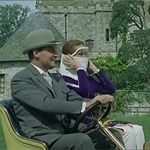
by NFA Media ArchiveOctober 11, 2023
🎬British Pathé – Fabulous item shows the filming of several veteran car tag pieces for TV series 'The Avengers'. At Lord Montagu's Motor Museum we see the filming of the 'tag' pieces for episodes of The Avengers television series, where Diana Rigg and Patrick Macnee drive off in a vintage car - a different one each time. Several shots of the cast and crew in the grounds of Beaulieu; Patrick Macnee chats to Lord Montagu. Patrick and Diana get into a veteran car; Diana puts on a groovy kind of face/eye shield and they drive off; they stop and the director gives instructions to Diana; as they start off again funny business ensues as Diana puts her feet up, then jumps from the car, leaps back in, clutches her head and so on. Diana, in an evening outfit of a chiffon over harem pants, has her make-up touched up. Another sequence is shot with a different vintage car; when it doesn't start, Diana gets from the back seat into the front and prepares to drive while Patrick goes to the rear to push, and ends up with a blackened face from the exhaust. He gets in; Diana drives off. Commentator says the crew are trying to complete all these end sequences in one day's shooting. Diana, in a blue cat suit, chews gum while receiving direction. In this sequence, Diana and Patrick start to push the veteran car which zooms off without them as they chase after it. Note: according to a press release on file, this series was the first in Colour. More details in notes on the clothes worn and the filming of these tag pieces; Diana's costumes were designed by Alan Hughes; Patrick wore his own suits! Cuts exist - see separate record
4513 Views
-

by New Forest ArchiveOctober 11, 2023
🎬BBC South 50 years: Episode1 BBC South. A series of 19 mini-features made by BBC South at Southampton in 2011 to celebrate the station's 50 year history.
Episode 1 BBC South. Steve Humphrey tells the story of BBC South from the first broadcasts of South at Six. Introductory footage is from the British Pathé Archive.
NFG are indebted to the BBC staff at Southampton for their help in sourcing items for the archive. See more episodes in the Category - BBC South.
5585 Views
-
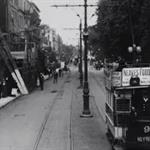
by NFA Media ArchiveOctober 11, 2023
🎬An unnamed local filmmaker set up his camera on the top deck of a Southampton Tram. The result is a wonderful window on life in the last year of the Victorian age.
Southampton 1900, A Tram Journey. Starting at North Gate, Bargate Arch. North along Above Bar Street. Finishing at The Clock Tower, Palmerston Park.
5228 Views
-
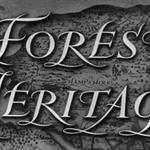
by NFA Media ArchiveOctober 11, 2023
🎬 The New Forest. A film exploring the rich landscape, people and forest traditions in the post war years.
18th century Agisters and pigs with rights to wander are just some of the ancient traditions celebrated in this beguiling look at life in the New Forest. Less familiar sights are captured, too, such as broom making and logging, forestry planting and sailing on the River Beaulieu near Buckler's Hard. No film about the area would be complete, though, without the famous Forest ponies – who are seen here in all their equine glory.
Filmmaker Roy Layzell made many films during this period including other local area films such as Pipelines Under Southampton Water in 1957.
Clifton Parker was a renowned British composer. With nearly 50 feature films under his belt, including The 39 Steps in 1959 and Sink The Bismark in 1960.
John Snagge (OBE) was the voice of the BBC from the war years to his retirement in 1980.
Featuring John Snagge
Music by Clifton Parker
Filmed and Directed by Roy Layzell
Original Cinema Release 1952
The film was commissioned by the Esso Petroleum Company in 1952, just as they were establishing a new refinery on the eastern edge of the New Forest at Fawley, but Forest Heritage is entirely concerned with the natural beauty and traditions of the area: ‘A place out of this modern world where simple pleasures are enough – a miraculous survival of pre-Norman England’.
9291 Views
-
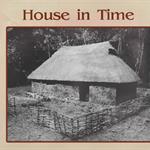
by NFA Media ArchiveOctober 11, 2023
🎬Building a Cob house in a day. Filmed on the Beaulieu Estate by Meridian Broadcasting.
Imagine the year is 1650, a young couple, Jacob and Catherine are about to get married, but have nowhere to live together. Their respective houses are already over-crowded. Up to 10 or more people would live in a Cob house 25 feet long and 13 feet wide.
Hence the practice of erecting a house in a single day by the whole village for the newly-weds. A communal venture. Once the house was completed, the householder would treat their guests to a party of eating, drinking and dancing.
But how was it possible to build a house in a little over sixteen hours, and could it be re-attempted 350 years later? The following is an account of an incredible day and a brilliant group of volunteers who made it all possible.
Our thanks to the staff at Meridian Broadcasting in Northam for their help in sourcing this film.
7693 Views
-
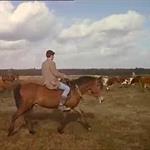
by NFA Media ArchiveOctober 11, 2023
🎬British Pathé – A look at how cattle which roam on the New Forest prairies are rounded up and checked once a year. New Forest, Hampshire. L/S of a red van driving up a leafy road, it passes some cows stood at the side. Various shots of cattle grazing at the side of the road as cars drive past. L/S of several people on horseback rounding the cattle up in a prairie. Various shots as they round the cattle up and herd them up the prairie. L/S as the cattle walk through a stream followed by seven herders. Various shots as the herders on horseback follow the cattle. Various shots of the cattle herded together, M/S as they go into a field. C/U of one of the men on a horse. M/S of the cows crowded together, M/S as they are herded under a tree. M/S as a man approaches one with a pair of clippers, M/S as he clips a bit of hair away from the cow's back. C/U as he brushes it away to reveal the letter 'R' branded on its back. M/S as another man clips a cow, C/U of a young man looking on. M/S of a man putting a rope round a heifer's neck. M/S of a man on horseback. M/S as a heifer is pulled along by the rope
4749 Views
Update Required
To play the media you will need to either update your browser to a recent version or update your

Processing Video - Please Wait!

Processing Video - Please Wait!

Processing Video - Please Wait!

Processing Video - Please Wait!
Update Required
To play the media you will need to either update your browser to a recent version or update your
🎬British Pathé – Fabulous item shows the filming of several veteran car tag pieces for TV series 'The Avengers'. At Lord Montagu's Motor Museum we see the filming of the 'tag' pieces for episodes of The Avengers television series, where Diana Rigg and Patrick Macnee drive off in a vintage car - a different one each time. Several shots of the cast and crew in the grounds of Beaulieu; Patrick Macnee chats to Lord Montagu. Patrick and Diana get into a veteran car; Diana puts on a groovy kind of face/eye shield and they drive off; they stop and the director gives instructions to Diana; as they start off again funny business ensues as Diana puts her feet up, then jumps from the car, leaps back in, clutches her head and so on. Diana, in an evening outfit of a chiffon over harem pants, has her make-up touched up. Another sequence is shot with a different vintage car; when it doesn't start, Diana gets from the back seat into the front and prepares to drive while Patrick goes to the rear to push, and ends up with a blackened face from the exhaust. He gets in; Diana drives off. Commentator says the crew are trying to complete all these end sequences in one day's shooting. Diana, in a blue cat suit, chews gum while receiving direction. In this sequence, Diana and Patrick start to push the veteran car which zooms off without them as they chase after it. Note: according to a press release on file, this series was the first in Colour. More details in notes on the clothes worn and the filming of these tag pieces; Diana's costumes were designed by Alan Hughes; Patrick wore his own suits! Cuts exist - see separate record
🎬BBC South 50 years: Episode1 BBC South. A series of 19 mini-features made by BBC South at Southampton in 2011 to celebrate the station's 50 year history.
Episode 1 BBC South. Steve Humphrey tells the story of BBC South from the first broadcasts of South at Six. Introductory footage is from the British Pathé Archive.
NFG are indebted to the BBC staff at Southampton for their help in sourcing items for the archive. See more episodes in the Category - BBC South.
🎬An unnamed local filmmaker set up his camera on the top deck of a Southampton Tram. The result is a wonderful window on life in the last year of the Victorian age.
Southampton 1900, A Tram Journey. Starting at North Gate, Bargate Arch. North along Above Bar Street. Finishing at The Clock Tower, Palmerston Park.
🎬 The New Forest. A film exploring the rich landscape, people and forest traditions in the post war years.
18th century Agisters and pigs with rights to wander are just some of the ancient traditions celebrated in this beguiling look at life in the New Forest. Less familiar sights are captured, too, such as broom making and logging, forestry planting and sailing on the River Beaulieu near Buckler's Hard. No film about the area would be complete, though, without the famous Forest ponies – who are seen here in all their equine glory.
Filmmaker Roy Layzell made many films during this period including other local area films such as Pipelines Under Southampton Water in 1957.
Clifton Parker was a renowned British composer. With nearly 50 feature films under his belt, including The 39 Steps in 1959 and Sink The Bismark in 1960.
John Snagge (OBE) was the voice of the BBC from the war years to his retirement in 1980.
Featuring John Snagge
Music by Clifton Parker
Filmed and Directed by Roy Layzell
Original Cinema Release 1952
The film was commissioned by the Esso Petroleum Company in 1952, just as they were establishing a new refinery on the eastern edge of the New Forest at Fawley, but Forest Heritage is entirely concerned with the natural beauty and traditions of the area: ‘A place out of this modern world where simple pleasures are enough – a miraculous survival of pre-Norman England’.
🎬Building a Cob house in a day. Filmed on the Beaulieu Estate by Meridian Broadcasting.
Imagine the year is 1650, a young couple, Jacob and Catherine are about to get married, but have nowhere to live together. Their respective houses are already over-crowded. Up to 10 or more people would live in a Cob house 25 feet long and 13 feet wide.
Hence the practice of erecting a house in a single day by the whole village for the newly-weds. A communal venture. Once the house was completed, the householder would treat their guests to a party of eating, drinking and dancing.
But how was it possible to build a house in a little over sixteen hours, and could it be re-attempted 350 years later? The following is an account of an incredible day and a brilliant group of volunteers who made it all possible.
Our thanks to the staff at Meridian Broadcasting in Northam for their help in sourcing this film.
🎬British Pathé – A look at how cattle which roam on the New Forest prairies are rounded up and checked once a year. New Forest, Hampshire. L/S of a red van driving up a leafy road, it passes some cows stood at the side. Various shots of cattle grazing at the side of the road as cars drive past. L/S of several people on horseback rounding the cattle up in a prairie. Various shots as they round the cattle up and herd them up the prairie. L/S as the cattle walk through a stream followed by seven herders. Various shots as the herders on horseback follow the cattle. Various shots of the cattle herded together, M/S as they go into a field. C/U of one of the men on a horse. M/S of the cows crowded together, M/S as they are herded under a tree. M/S as a man approaches one with a pair of clippers, M/S as he clips a bit of hair away from the cow's back. C/U as he brushes it away to reveal the letter 'R' branded on its back. M/S as another man clips a cow, C/U of a young man looking on. M/S of a man putting a rope round a heifer's neck. M/S of a man on horseback. M/S as a heifer is pulled along by the rope